Renewable Energy Certificates (RECs), nanogrids, or both?
How to evaluate clean energy solutions for corporations
February 9, 2021
In the past few years, most corporations have publicly announced their interest in reducing their carbon footprint. Many solutions are offered to them to decarbonize their activities, but which ones are the best? It is extremely complicated for those corporations to come up with a clear plan.
When we look at what buildings’ energy consumption represents on a corporation's carbon footprint, it is obvious that the first place to intervene is at this level. For example, if the resources for power generation of the main electrical grid are not renewable, an obvious solution would be to add or compensate with clean energy.
There are different ways to do so: Renewable Energy Certificates (RECs), Power Purchase Agreements (PPAs), Green Power Programs, etc., but our favorite one: decentralized, behind-the-meter, and self-produced energy. Also known as nanogrids.
In this article, we will explain the differences between RECs and nanogrids, evaluate the Pros and Cons, and help corporations understand which solution is best fitted for their situation.
REC or nanogrid; which one should I use?
Every clean energy solution has their Pros and Cons. In this article, we will focus on RECs, the most popular solution for big corporations at this time, and nanogrids, the main reason for vadiMAP's existence.
Renewable Energy Certificates (RECs)
Renewable Energy Certificates (RECs), also known as green energy certificates or tradable renewable certificates are proof that energy has been generated from renewable sources such as solar or wind power. Each REC represents the environmental benefits of 1 MWh of renewable energy generation. When you purchase RECs, renewable energy is generated on your behalf.
- Pros: RECs are inexpensive, fast, and easy to purchase.
- Cons: RECs have a questionable environmental impact because the electricity you purchase is not directly consumed by the building. They represent a cost, and will only ever be a cost because no savings or no revenue streams are generated.
Nanogrids or on-site generation
A nanogrid is an electrical system of less than 1 MW of power with full or partial autonomy (when interacting with the main electrical grid). It is located on the consumer side behind the utility meter and allows self-produced and clean energy such as solar energy, energy storage (batteries and thermal storage), wind turbines, geothermal energy, electric vehicle chargers, etc.
- Pros: Buildings are powered directly from self-produced and clean energy. The investment in renewable energy is obvious to shareholders. The nanogrid assets (solar panels, batteries, etc.) will generate savings on energy bills for the next 30 years and make the buildings smarter, with more resilience. Certain assets such as solar panels can also be clearly visible from the outside and help communicate to your clients and investors your responsibility, investment and dedication towards a better future.
- Cons: Nanogrids do not always compensate 100% of a corporation's emissions due to buildings' complexity or the space available. They represent an important capital investment.
Nanogrids, then RECs
For big corporations, there is no absolute solution, but a mix of these solutions will allow them to compensate their buildings’ emissions. They should prioritize nanogrids and then buy RECs when on-site generation is not possible or does not make sense from a business perspective. With solutions such as vadiMAP, it is now much easier to integrate nanogrids into buildings. Also, with the vadiMAP prescription report, it is possible to quickly target, among many buildings, those with the best nanogrid potential.
In conclusion, corporations should not default to RECs when evaluating solutions that will help them meet their emissions reduction targets. New innovative solutions now exist that allow them to not only reduce their carbon footprint, but also increase their resilience and even reduce their energy costs.
Want to learn more about the vadiMAP Prescription report and the potential of renewable energy for your building(s)? Contact us now
Sources:

